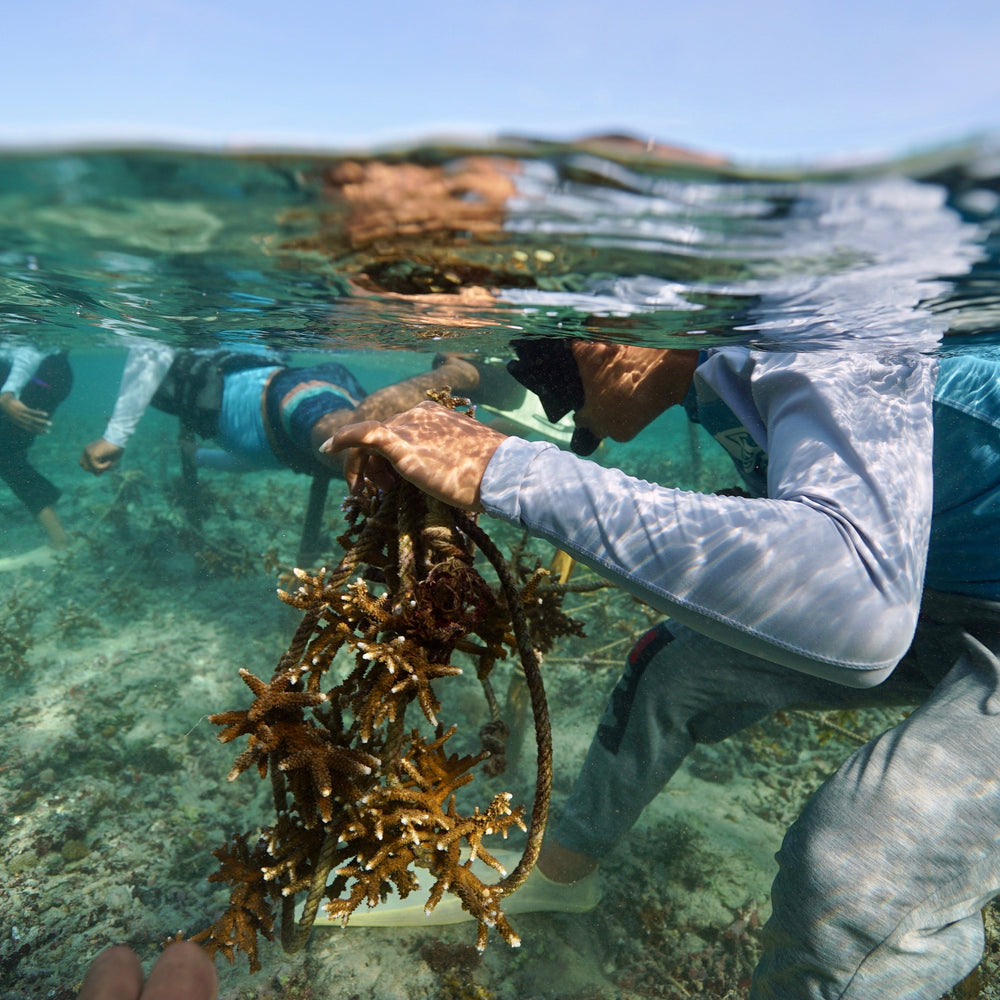
Restoring Bali's Coral Reefs
This project restores degraded coral reefs around Nusa Penida Island, Bali, in partnership with Ocean Gardener. Local fishermen are employed to plant and maintain coral until the reef can thrive independently.
Since 2021, over 12,000 coral fragments have been planted across two sites, and 3D monitoring with Scripps Institution of Oceanography tracks progress. Restoring these reefs supports more than 500 fish species, creates 20 local jobs, and strengthens coastal protection, tourism, and research.
With half of the world’s reefs lost and 60% of those remaining under threat, projects like this are critical to preserving the “rainforests of the sea.”
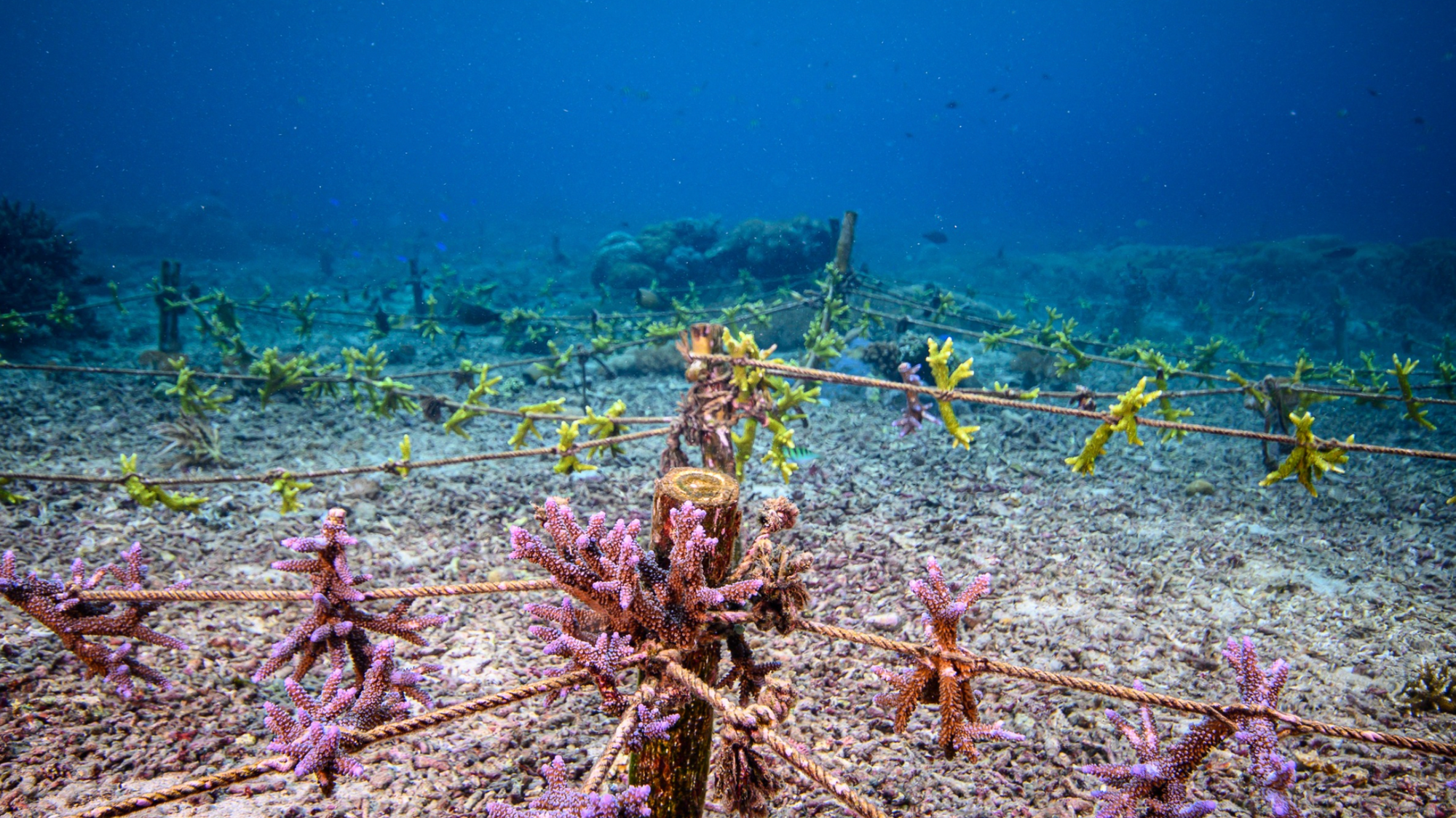
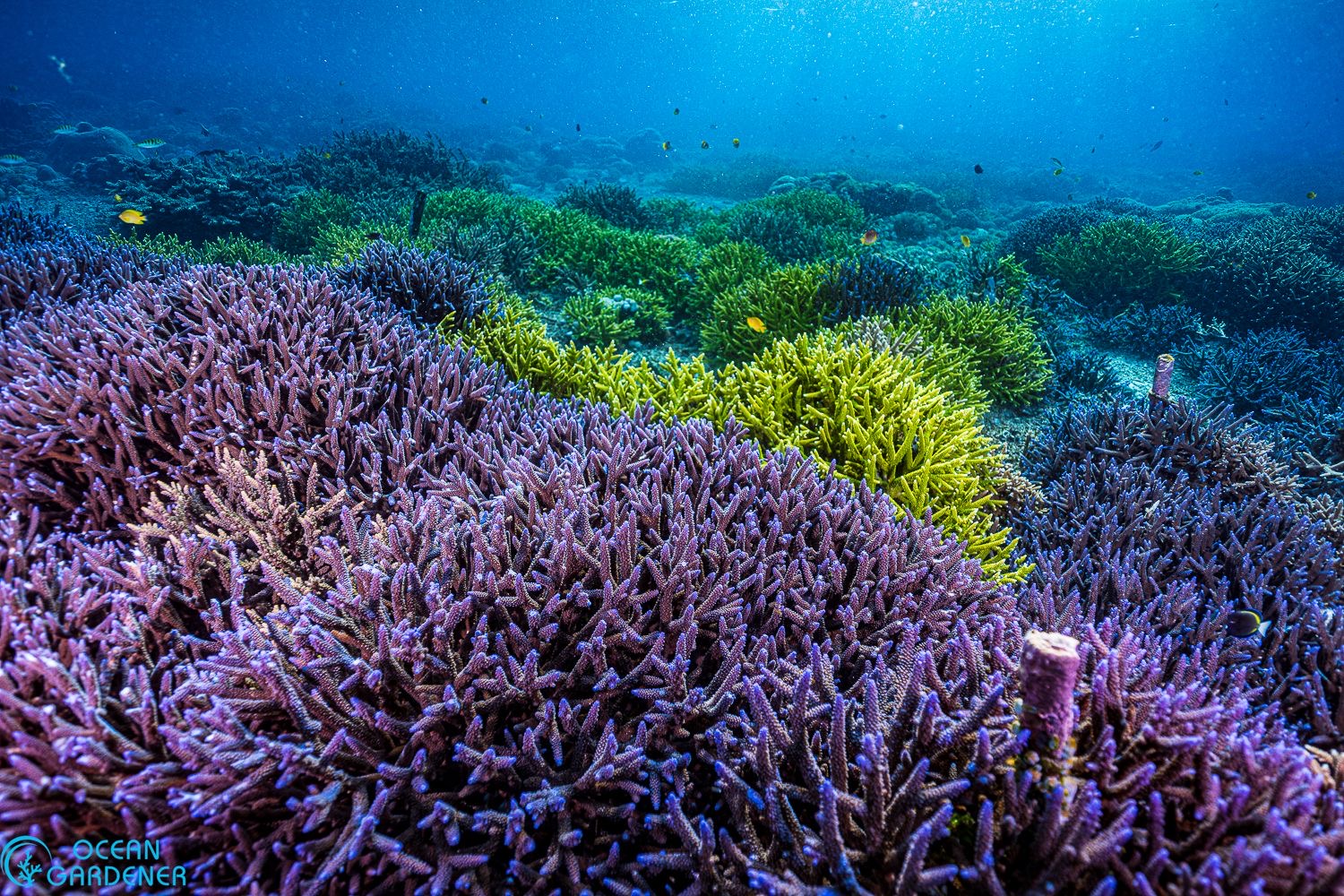
The Coral Restoration Process
This coral restoration process begins with growing coral fragments in the shallow waters of the Ped Acropora Coral Nursery. These fragments grow and bond to biodegradable rope lines until they are large enough to be transplanted to the restoration sites on Nusa Penida Island at Ped and Crystal Bay. This innovative technique, adapted from a traditional Balinese method used to grow seaweed, ensures that the coral fragments will grow to be appropriately spaced and that the ecosystem will thrive in the years to come.
Once the coral has been cultivated, a snorkeling team transplants the newly grown fragments onto the reef, slowly dropping them at the restoration site on the ocean floor and securing it in place. Divers prepare the restoration site by hammering stakes into the ground to allow for the rope lines to be secured in place on the reef without the fragments touching the ocean floor until they grow large enough to withstand the harsh “rubble” environment below. Planting these fragments amongst healthy reefs will allow the ecosystem to thrive and help marine life return to the area.
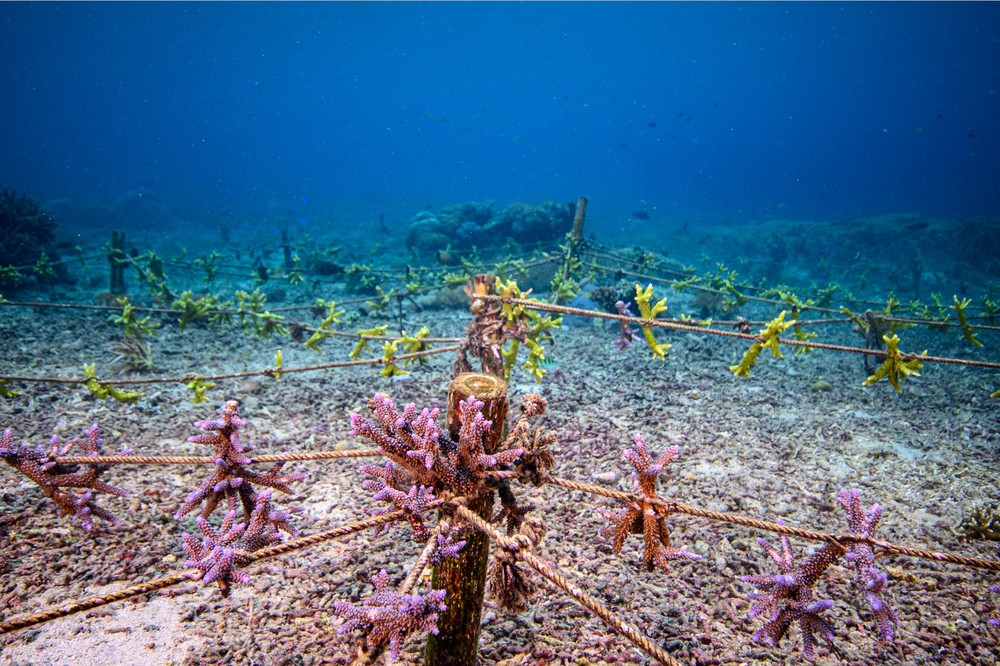
Start
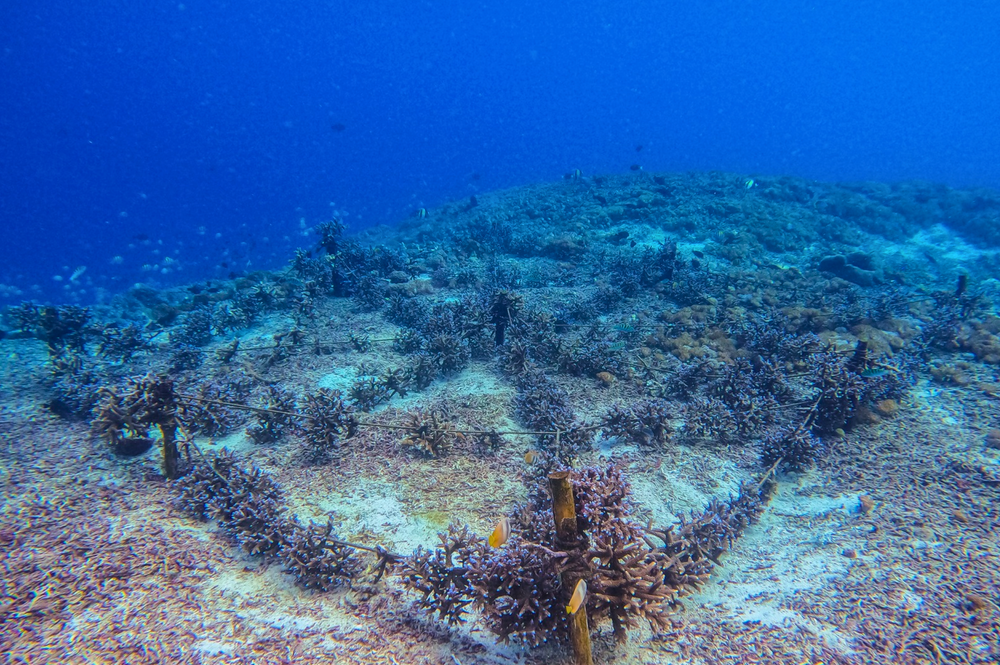
1 year
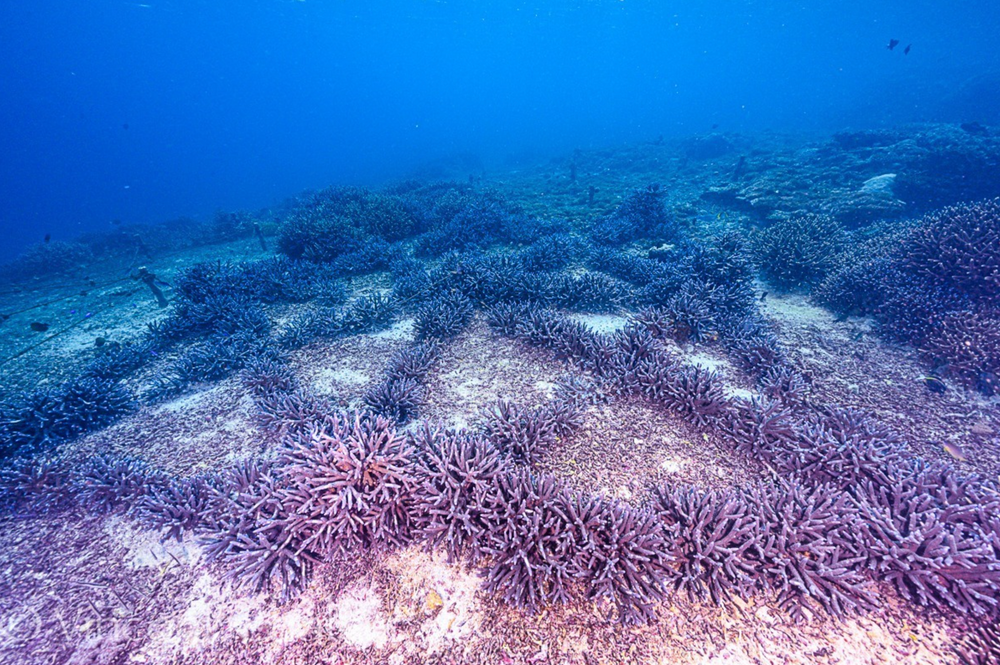
2 years
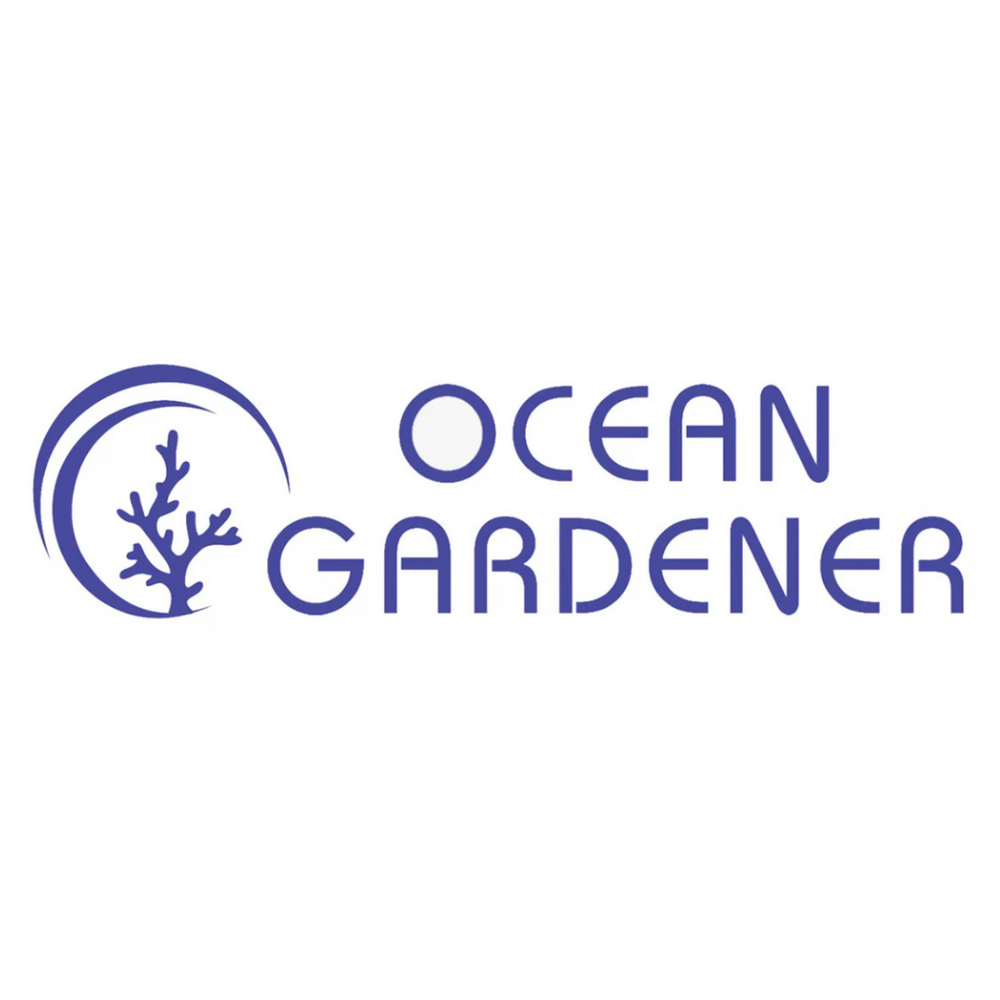
Ocean Gardener
SeaTrees partners with Ocean Gardener, a local Indonesian non-profit organization with over 20 years of hands-on experience farming coral that are key to restoration and biodiversity. Their team of marine biologists, divers, and coral farmers is dedicated to restoring the degraded reefs while educating the local community on best practices to protect the reefs moving forward.
A little further reading...
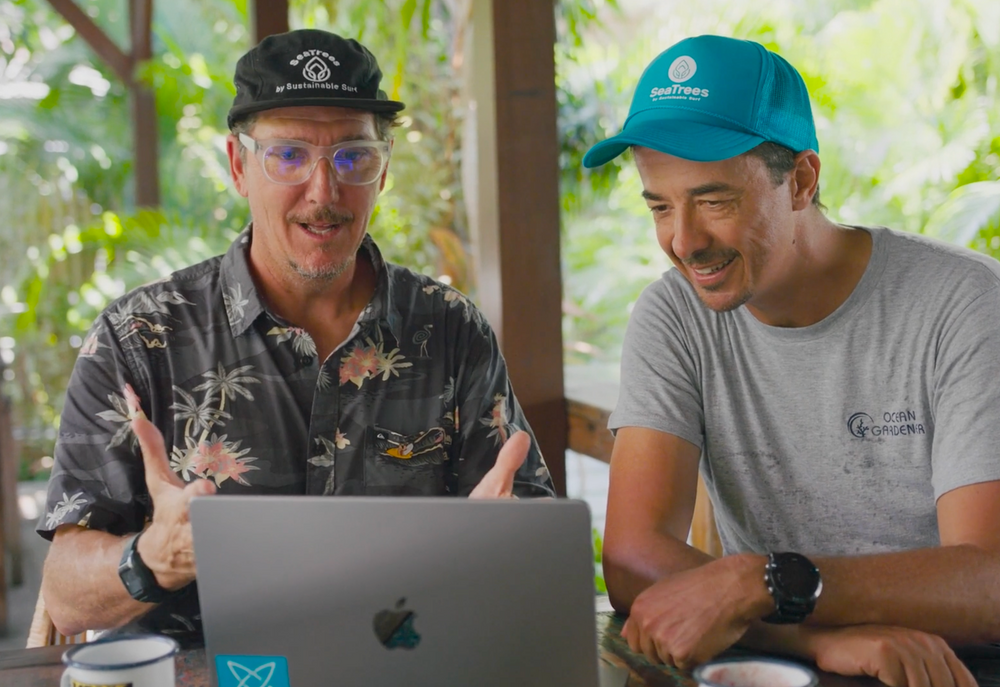
Creating 3D Models of the Restored Reef
With the help ofScripps Institution of Oceanographywe developed a new technique to create 3D models of the coral reef. GoPro cameras are used to collect 3D photogrammetry data from the SeaTrees coral restoration site, which is then used to create a model using 10 billion points of data. This model can be used by scientists to remotely evaluate the success of reef restoration. You can see this recent video of our restoration site on Nusa Penida Island in Bali, Indonesia.
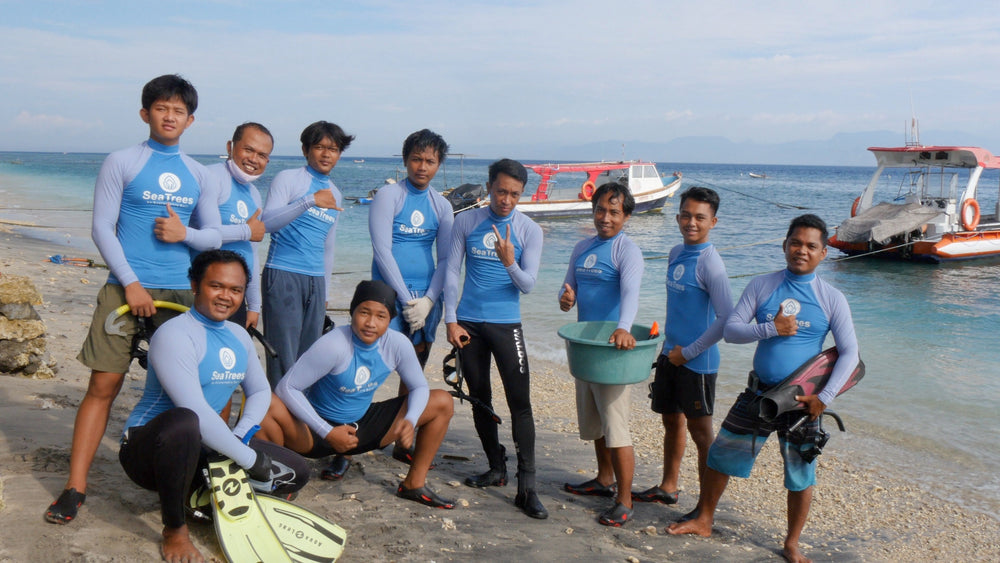
Sustainable Development
This coral restoration will provide a habitat for more than 500 species of fish, many of which are currently considered vulnerable to extinction. As more people live closer to reefs in Indonesia than anywhere else in the world, at this time the project will create 20 jobs for local villagers and support 12 families.
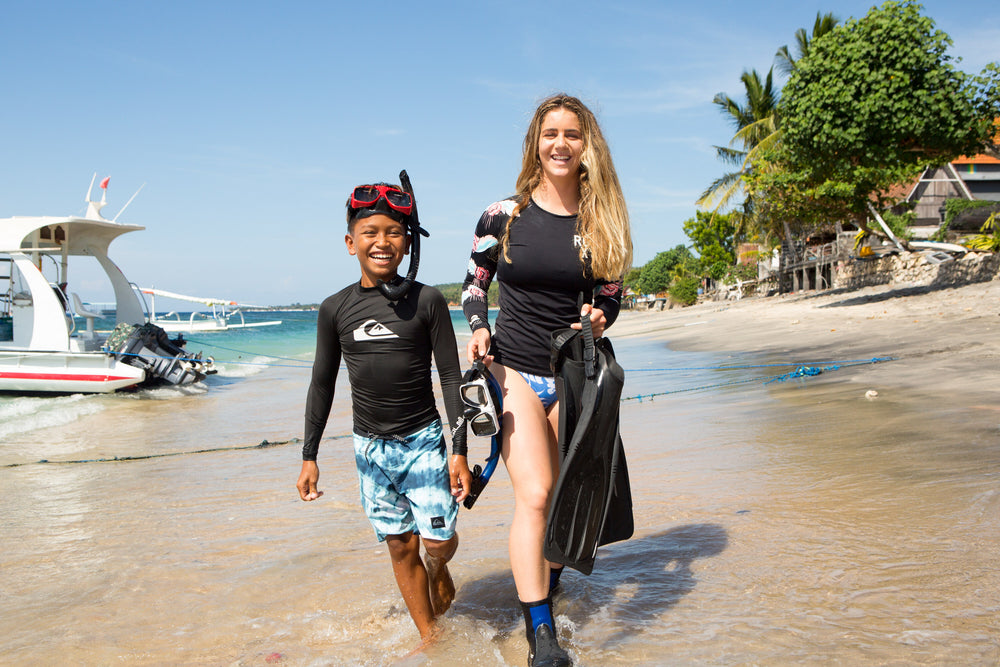
Engaging the Surfing Community
Not only do coral reefs produce some of the best waves on the planet, they also support a quarter of all ocean life. Roxy athlete Caroline Marks and Quiksilver team rider Rajo Barrel joined SeaTrees and Ocean Gardener to help restore coral reefs and mangrove forest at and near our project site.
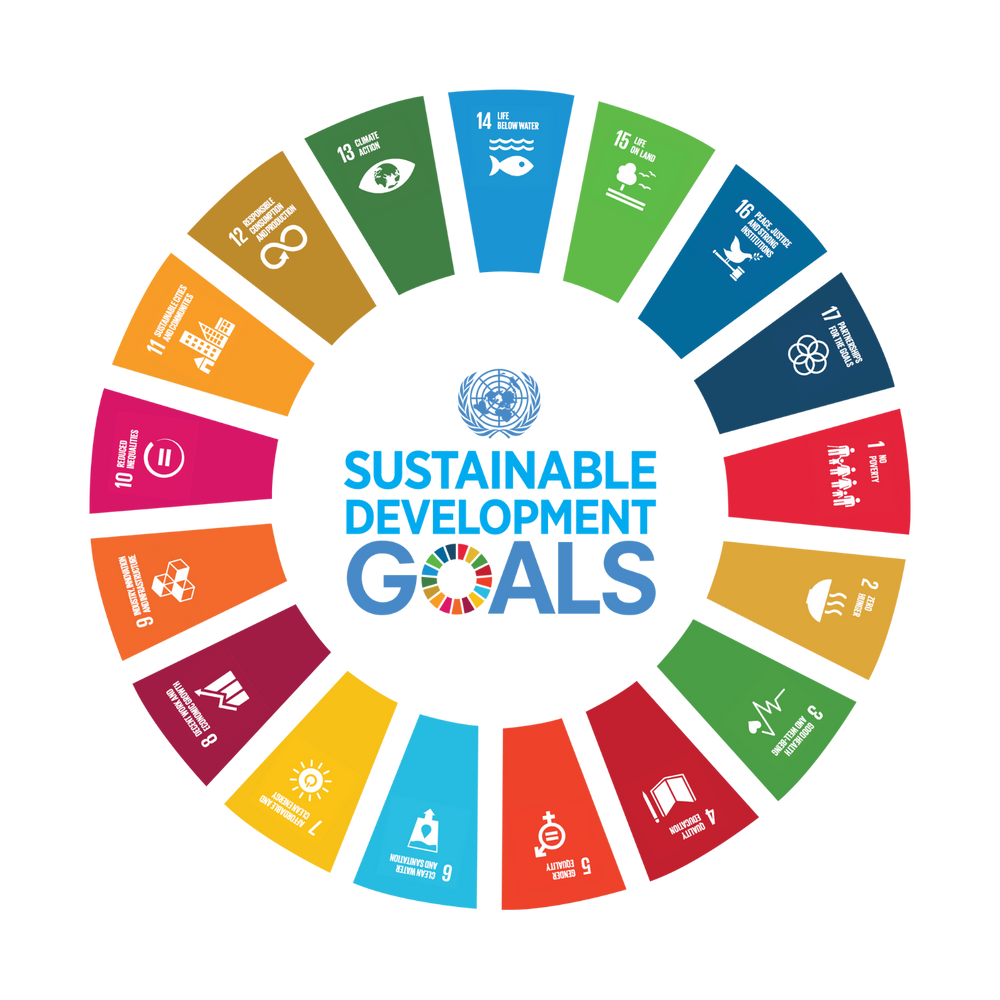
Creating Sustainable Benefits
This project provides living-wage employment and training opportunities for the local community, empowers gender equity, protects the area from increased climate change impacts, and safeguards critical habitats for several vulnerable species. This in turn drives all of the other Sustainable Development benefits produced by the project.
Key Impact Metrics
- Every 1000 corals planted creates approximately one week of employment.
- 36 local Indonesians are provided with employment - at a time when the pandemic had devastated Bali’s tourism-based economy
- 12+ families supported
- Habitat created for 500+ marine species
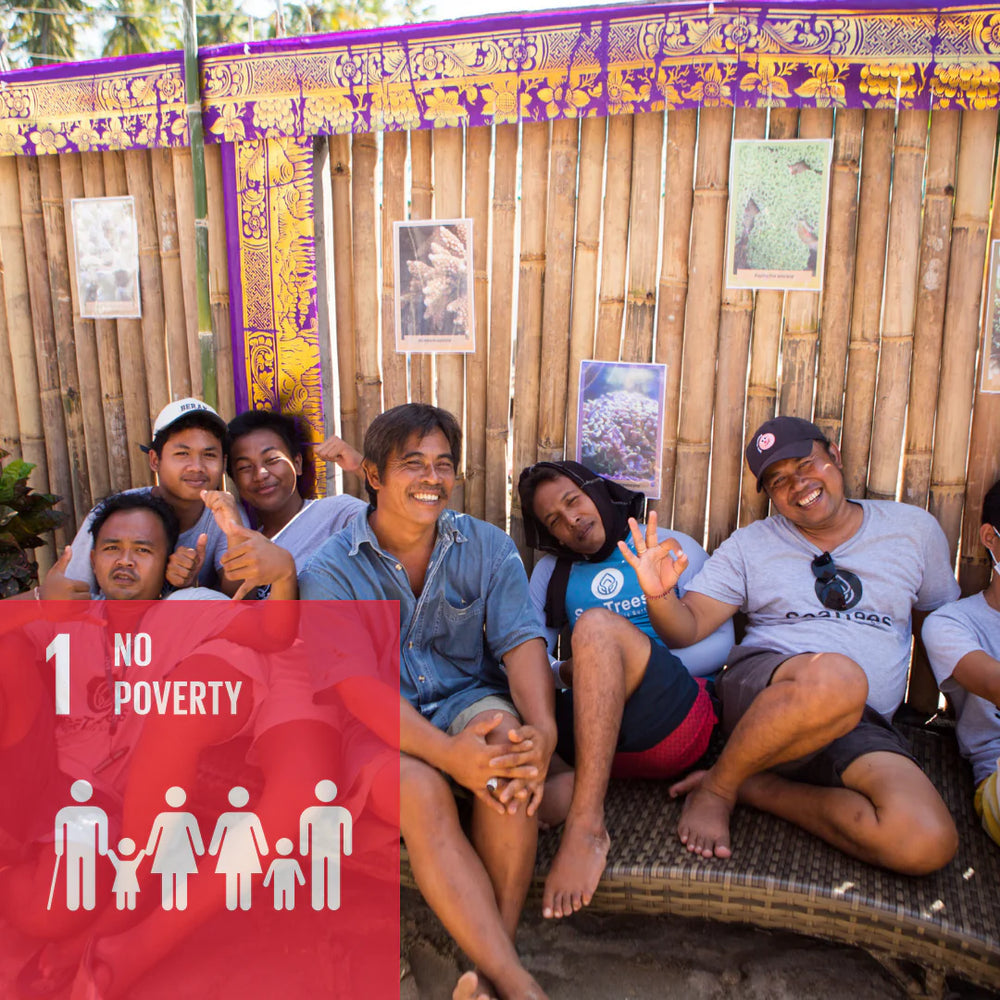
No Poverty
The families and communities on Bali have always depended on the local marine ecosystem for income and survival. Over the last few years, the pandemic devastated Bali’s tourism-based economy leaving many local communities out of work.
In partnership with Ocean Gardener, this project has supported 12 families and created 20+ paid jobs and training opportunities for local villagers, allowing for an increase in stable income in the region and potential for future expansion as locals are trained to monitor the site moving forward.
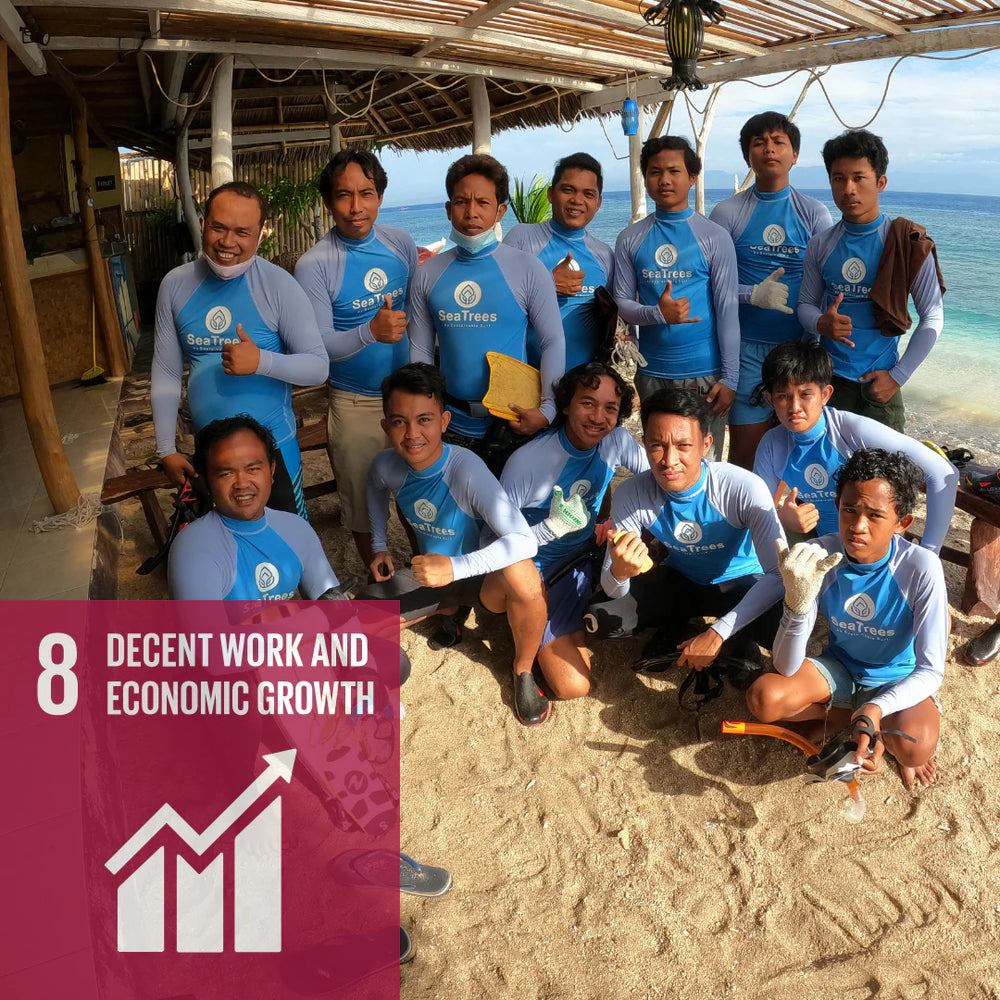
Decent Work for All
The tourism industry makes up over 50% of the economy in Bali, providing jobs to the local community that rely on healthy coral reefs. In order for this industry to remain viable long-term, the degraded coral reefs need to be restored.
SeaTrees’ project partner, Ocean Gardener, employs 36 local fishermen and divers to restore and protect the coral reefs off of Nusa Penida. Ocean Gardener trains divers and fishermen on best practices for coral protection while also educating them on the biology of corals and their importance for fish populations and coastal protection.
The region will receive additional economic support as divers and tourists may now visit the area and participate in the coral planting program which the local community is employed to instruct.
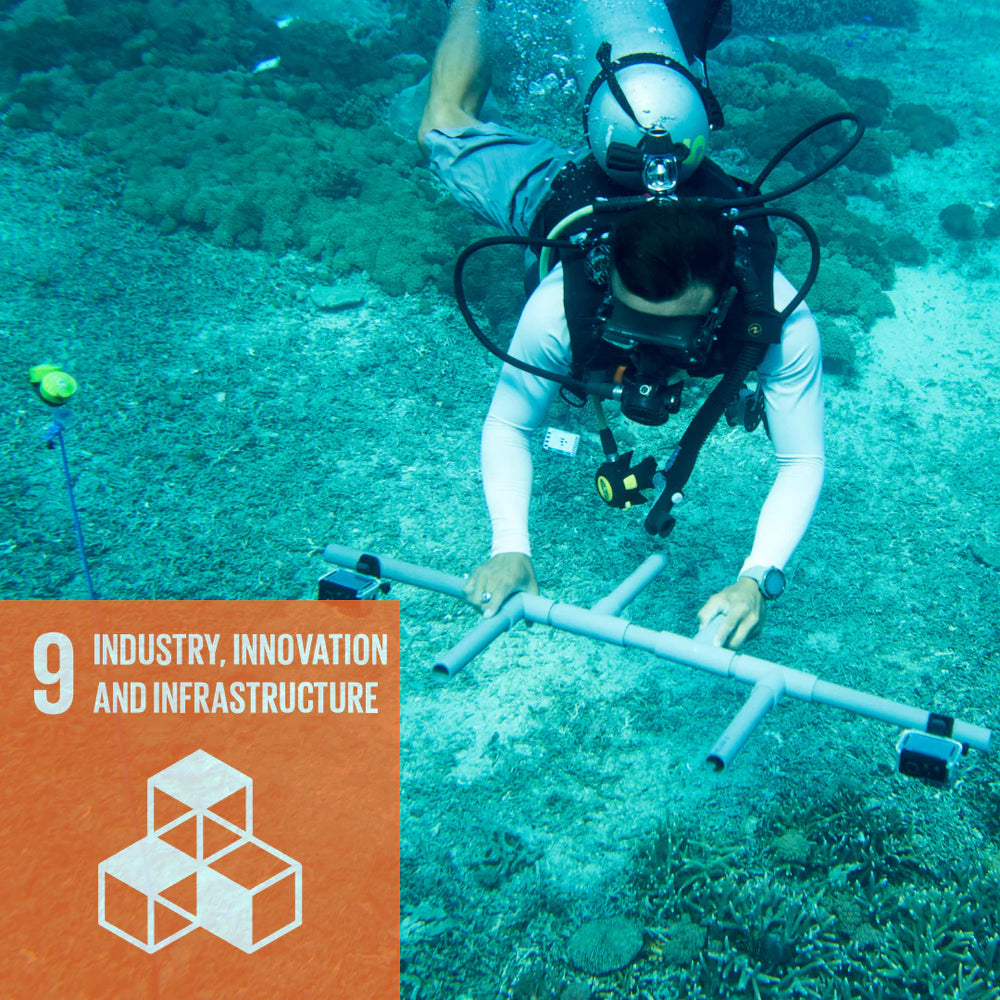
Industry, Innovation and Infrastructure
Ocean Gardener is a world leader in scalable and sustainable coral restoration techniques. Building on 20+ years of commercial coral farming experience, the Ocean Gardener team grows coral to replant and restore the damaged coral reefs off of Nusa Penida.
Ocean Gardener uses rope lines made from organic materials, rather than traditional metal or concrete, to grow a variety of coral fragments until they are ready to be placed on the ocean floor.
This method enables Ocean Gardener to grow coral at scale while avoiding any negative impacts on the ecosystem. Ocean Gardener then monitors the coral fragments using GoPros, which have the potential to contribute to future coral restoration research.
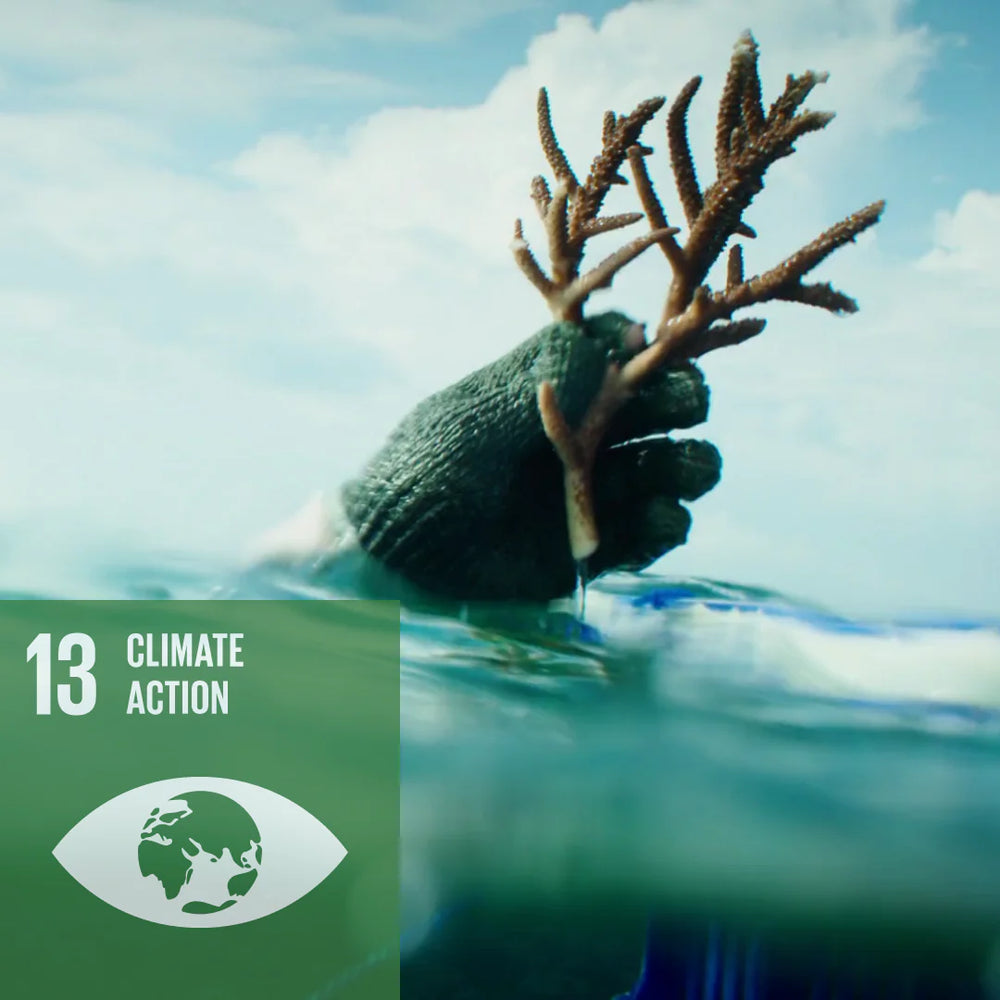
Climate Action
Coral reefs in the Crystal Bay and Ped regions of Nusa Penida, Bali have been historically destroyed by human activities and climate change. With the help of local Balinese fishermen and Ocean Gardner, coral restoration begins with growing fragments in the shallow waters of the Ped Acropora Coral Nursery. Once the fragments grow large enough they are transplanted onto the reef, allowing it to grow and rebuild so marine life can return to the area.
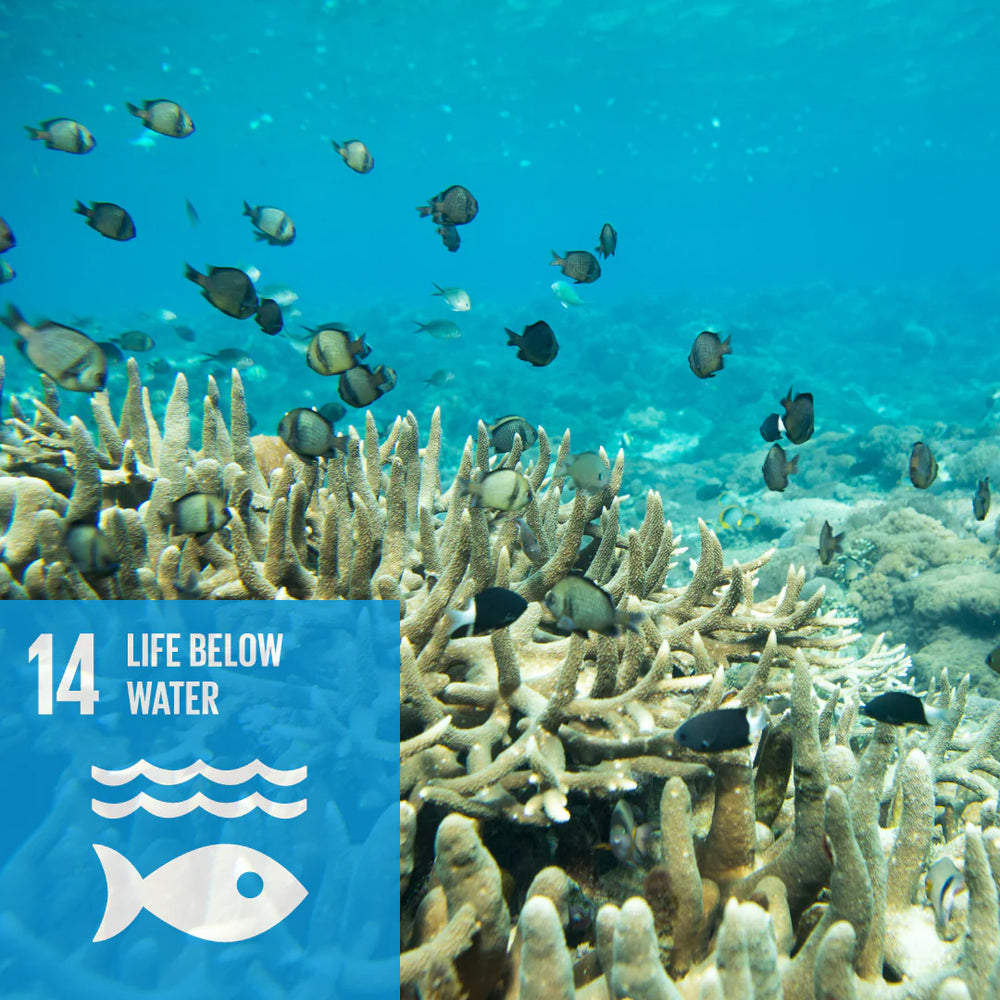
Life Below Water
Over the last 30 years, roughly 50% of the world’s coral reefs have been lost, and more than 60% of the remaining reefs are threatened by human activity. Indonesia is the largest area of vulnerability and the coral reefs in Bali have faced growing destruction due to the tourism industry.
Ocean Gardener directly restores and protects over 20 different coral species off of the island of Nusa Penida in Bali, Indonesia. The restored coral reef will provide habitat for more than 500 species of fish, many of which are currently considered vulnerable to extinction.


